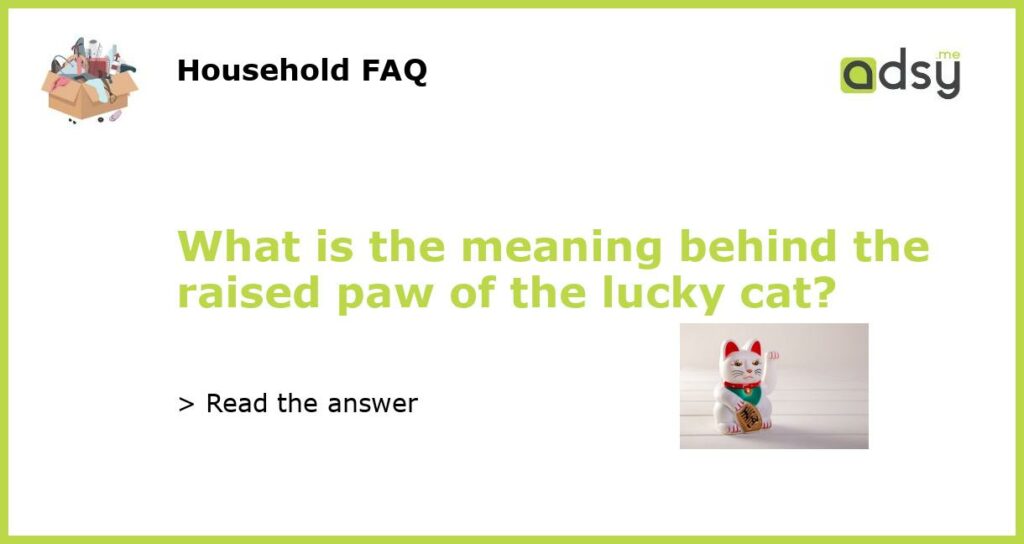The origin of the lucky cat
The lucky cat, also known as the Maneki-Neko, is a popular Japanese figurine that is believed to bring good luck and fortune to its owner. It is often displayed in shops, restaurants, and homes throughout Japan and other Asian countries. The origin of the lucky cat dates back to the Edo period when a wealthy feudal lord was saved by a cat that beckoned him to safety. The lord was so grateful that he started to distribute figurines with the same gesture as the cat to his people, and the lucky cat was born.
The raised paw of the lucky cat
The most recognizable feature of the lucky cat is its raised paw. The paw can be the right or left, and its position has different meanings. A lucky cat with the right paw raised is believed to bring in money and customers, making it a popular talisman in businesses. A lucky cat with the left paw raised is supposed to attract more people into one’s personal life, bringing good luck in love and relationships.
The different colors and accessories of the lucky cat
Aside from the raised paw, the lucky cat comes in different colors, each with its meaning. A white lucky cat symbolizes purity and happiness, while a black lucky cat is believed to ward off evil spirits and bad luck. A golden lucky cat represents wealth and prosperity, while a red lucky cat attracts good health. Moreover, the lucky cat can be seen wearing different accessories, such as a necktie, bib, bell, and coin. Each accessory has a specific significance in bringing good luck and fortune.
The cultural significance of the lucky cat
The lucky cat is more than just a charm for wealth and prosperity. It also holds cultural significance in Japanese society. The raised paw gesture, known as the “maneki” in Japanese, means to beckon or welcome, symbolizing good manners and hospitality. The lucky cat is often displayed in businesses to signify the establishment’s welcoming atmosphere and good service. Moreover, the lucky cat represents Japan’s belief in the mystical and supernatural, emphasizing the country’s spiritual connection with nature and its animistic traditions.
Conclusion
Overall, the lucky cat is a beloved symbol of fortune and hospitality in Japanese culture. Its raised paw, colors, and accessories hold distinct meanings that bring good luck and blessings to its owner. Whether it is displayed in businesses or homes, the lucky cat is a reminder of the Japanese people’s unique blend of spirituality and tradition. So next time you see a lucky cat, remember its history and symbolism, and appreciate its cultural significance.






